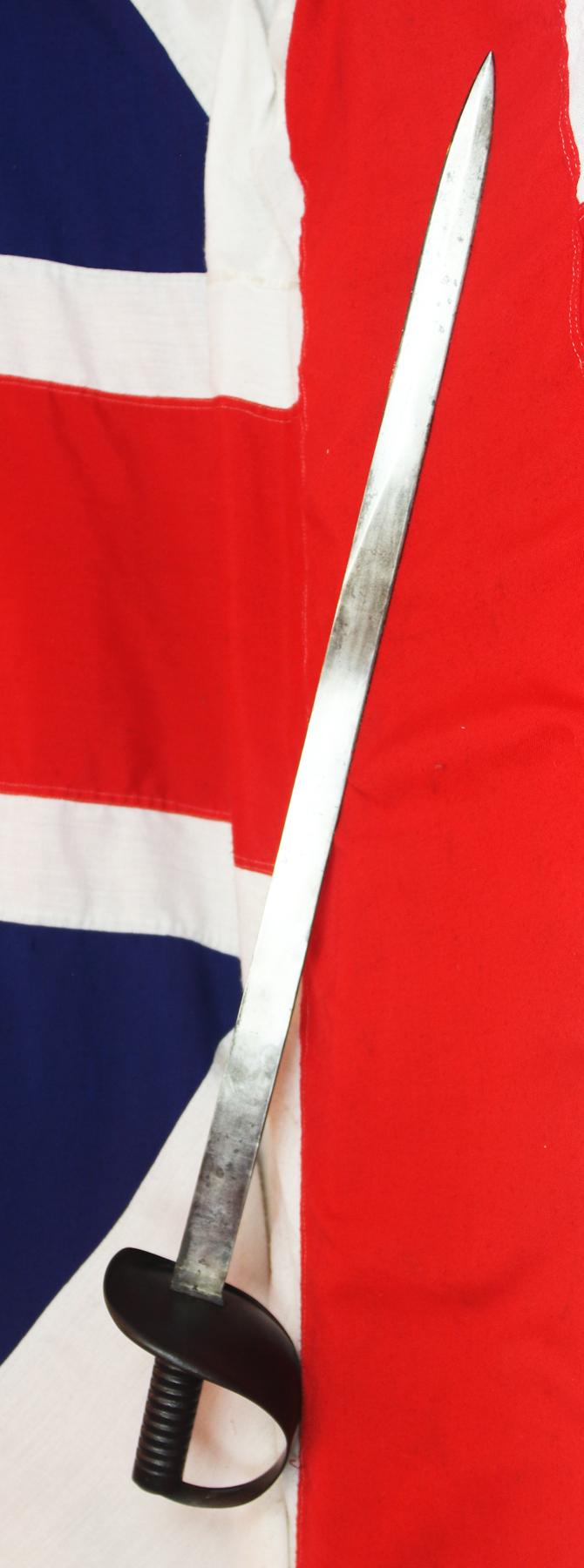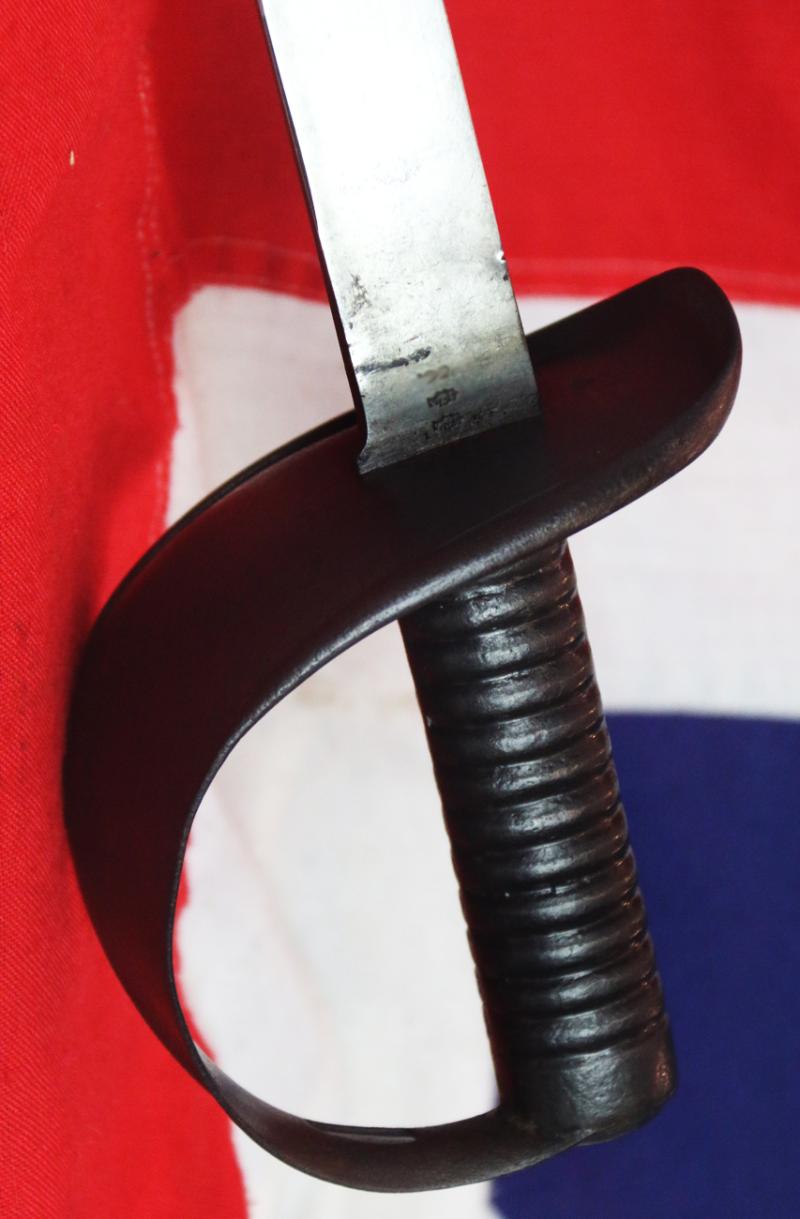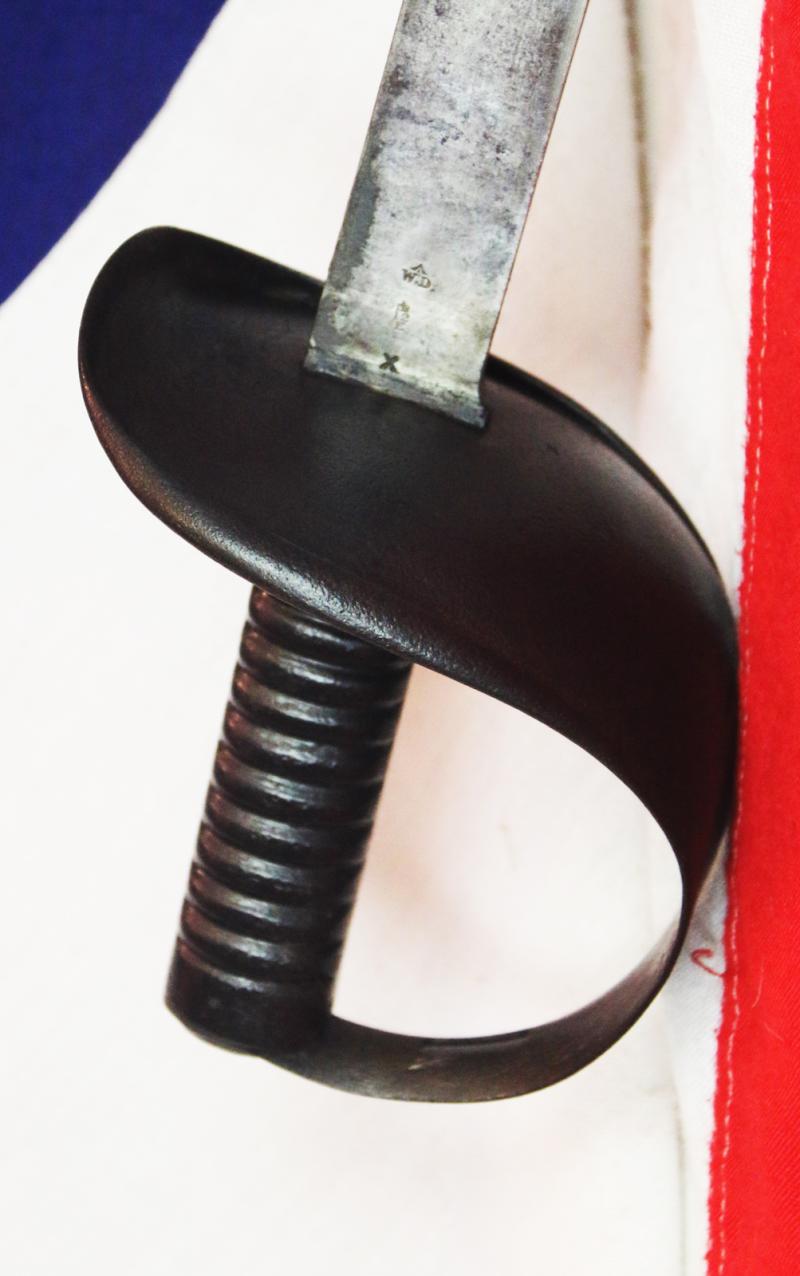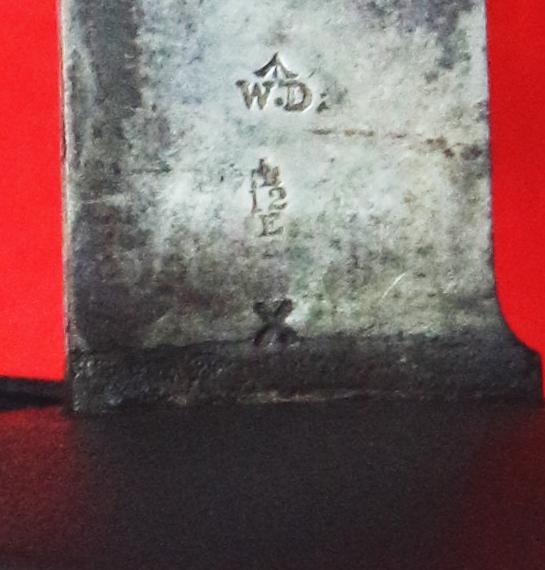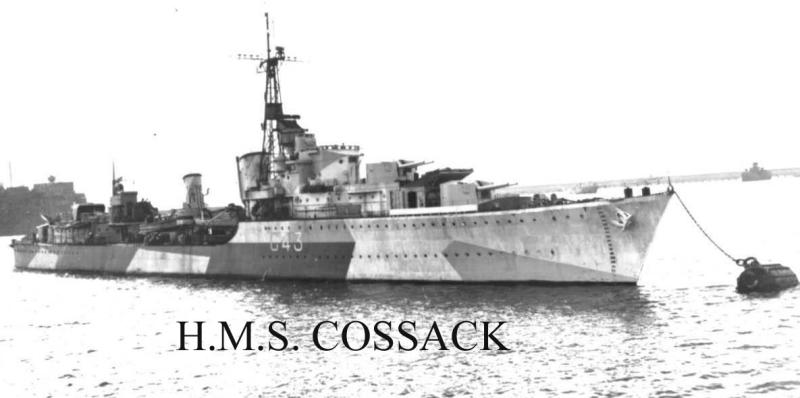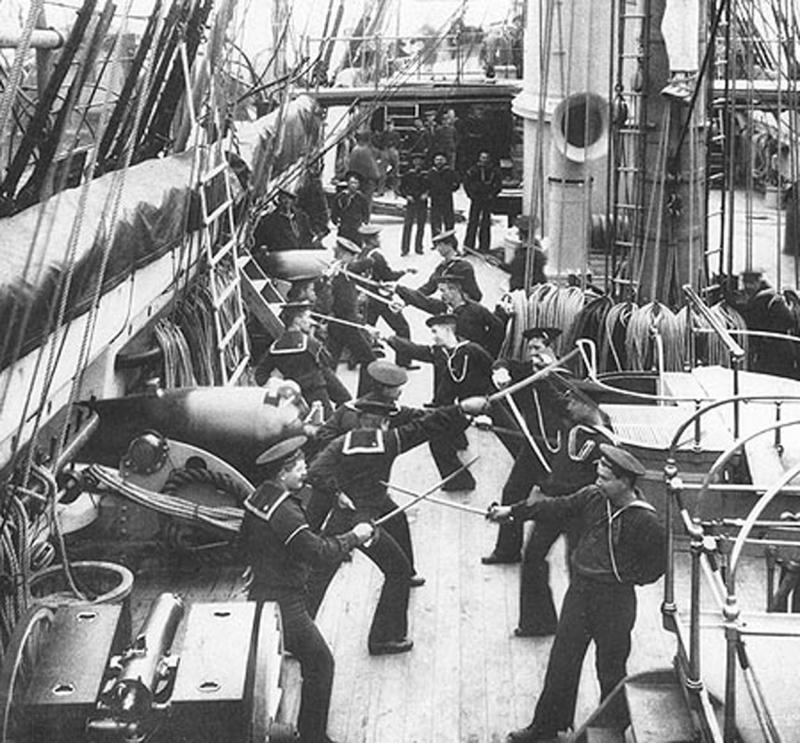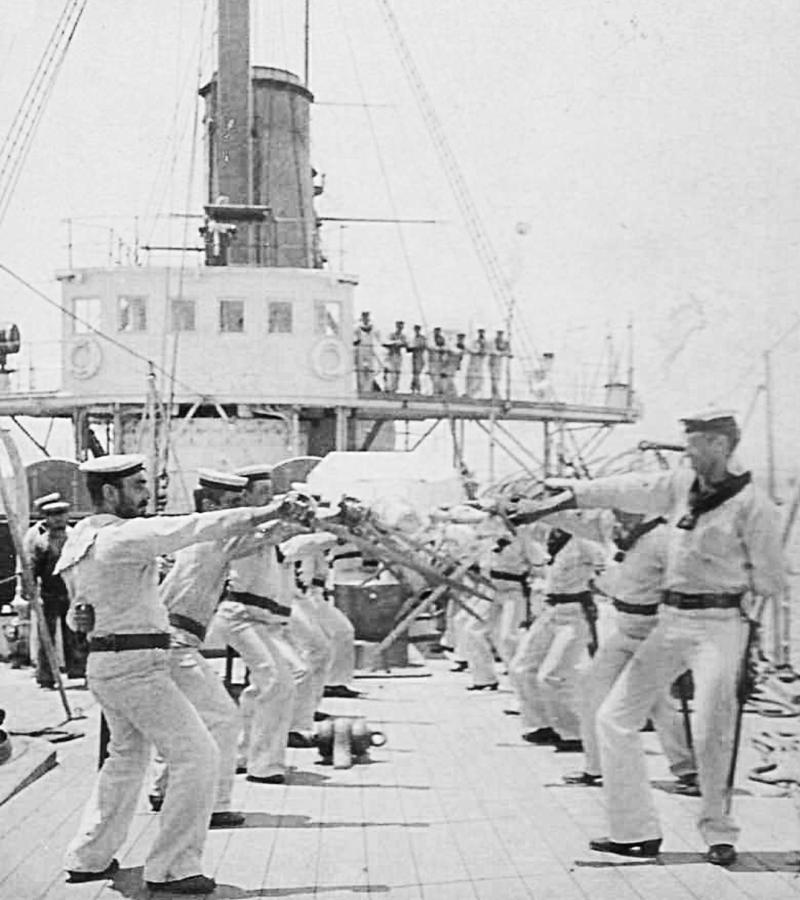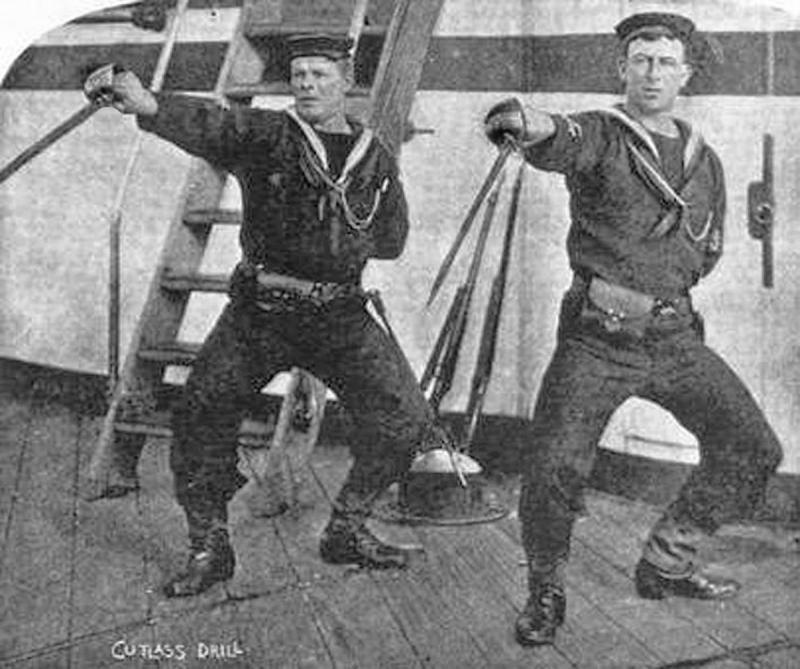A Superb, Original, Victorian, 1889 Pattern Royal Naval Combat Cutlass Made At The Enfield Armoury. For Repelling Boarders, Ship to Ship Combat, And Shore Party Protection
Traditional original blackened steel bowl, with cast iron ribbed grip, fully ordnance inspected WD {War Department} and duly stamped. Overall excellent condition for age and service use.
With full maker markings and standard RN blackened hilt. The sailors weapon of choice for several centuries. The use of edged weapons on board ships has a long history.
The cutlass has been the sailor's weapon for many years in western navies before its demise in the mid 20th century. It is a fairly heavy naval sword with a single-edged blade with return false edge of medium length which is generally given a very slight curve, but may often be straight.
The blade's weight is concentrated to provide a shattering blow delivered with the edge of the blade. There is little in the design to facilitate the use of the point, nor is it easy to parry another's blow. This is a sword designed for simplistic use by a user who has had little training in fencing.
Therefore the cutlass-wielding sailor would have usually been out-fought by a swordsman who kept his cool and used the point to break up a sailor's line of attack. Nevertheless, the weight of a cutlass blade would often be enough to sweep a lighter blade out of the way. It would indeed be an interesting match between a cutlass-wielding British sailor versus a French officer.
The term "cutlass" seems to have come into use by default as it was not an official term in the early days of the British Navy. Indeed, the word cutlass comes from the French coutelas.
Swords can be seen on ordnance lists from 1645. They were habitually carried on land by some men, both as a defence and to signify the status of the wearer - the peasant's weapon being a more clumsy bill, or spear.
The sword required some expense in its purchase and indeed could be decorated to its owner's wish. The term cutlass seems to have been applied to sea swords and then stuck.
In the early 1700s the most famous of cutlass designs was taken up by the Royal Navy. This was the "double disk" cutlass, perhaps invented by Thomas Hollier, which featured two disks of steel as a guard joined by a broad strip of metal to complete protection for the hand. Thousands of these weapons were turned out by a variety of manufacturers and the weapon was used by a variety of navies.
Sailors received little training in sword technique and indeed these weapons were often snatched up at the last minute from chests kept on deck, either to repel boarders or to take on a boarding made against another ship.
Scabbards were not needed because a sailor would need his cutlass for immediate use in battle. However one in ten were made with scabbards for shore parties.
Boarding over the side of another ship in the days of sail was often a difficult affair. Sometimes the enemy's vessel could be much bigger than your own, or indeed much smaller, necessitating either a climb up the gunports and through the anti-boarding nettings of the other ship or a plunge down, probably on a rope's end, onto the deck of the smaller vessel.
At the encounter between the 14-gun Speedy and the 32-gun Gamo in 1801 a British boarding party led by Captain Thomas Cochrane took the Spanish frigate by boarding in a fierce action. The small British ship was manoeuvred to come close alongside the enemy and eventually under the Spanish guns' maximum depression. Then Cochrane led the entire 40 crew - except for eight casualties and the surgeon who was left at the wheel.
Armed with cutlasses, axes and pikes the British sailors fought ferociously in hand-to-hand combat with Cochrane calling loudly for another 50 fictitious reinforcements to follow. The Spanish flung down their weapons and surrendered.
The RN retained cutlasses in service aboard vessals officially until 1936, although there are reports of personnel carrying such weapons in WWII. And it is still used in Courts Marshal. The cutlass was last officially used in the Altmark incident where the British Naval Ship, HMS Cossack, liberated the prisoners captured by the Battleship Graf Spee that were being transported illegally through Norwegian waters by the German ship Altmark.
A previous owner stated this sword was used on HMS Cossack, alongside their other later pattern cutlasses, but we have absolutely no way of substantiating this
Code: 25379

